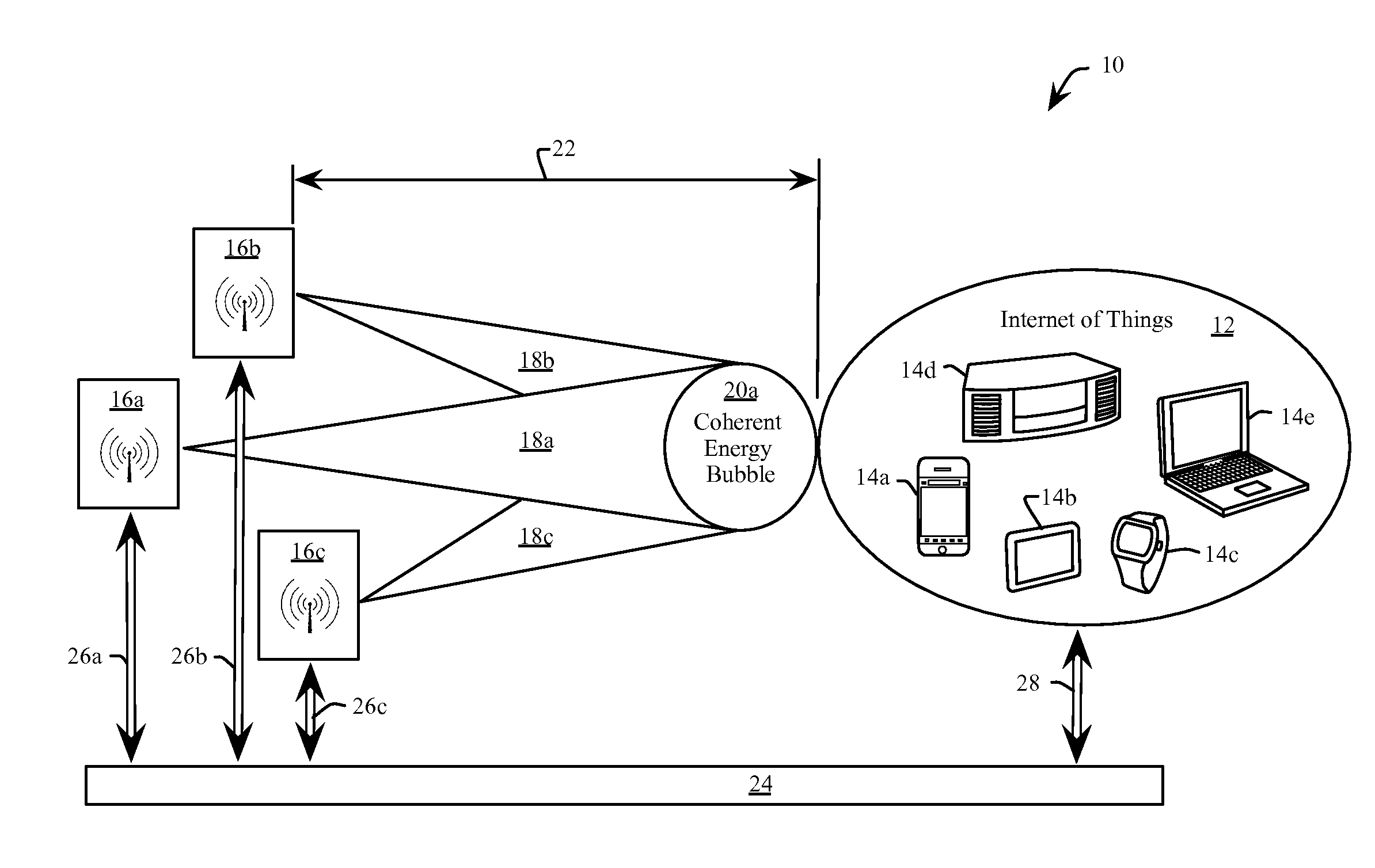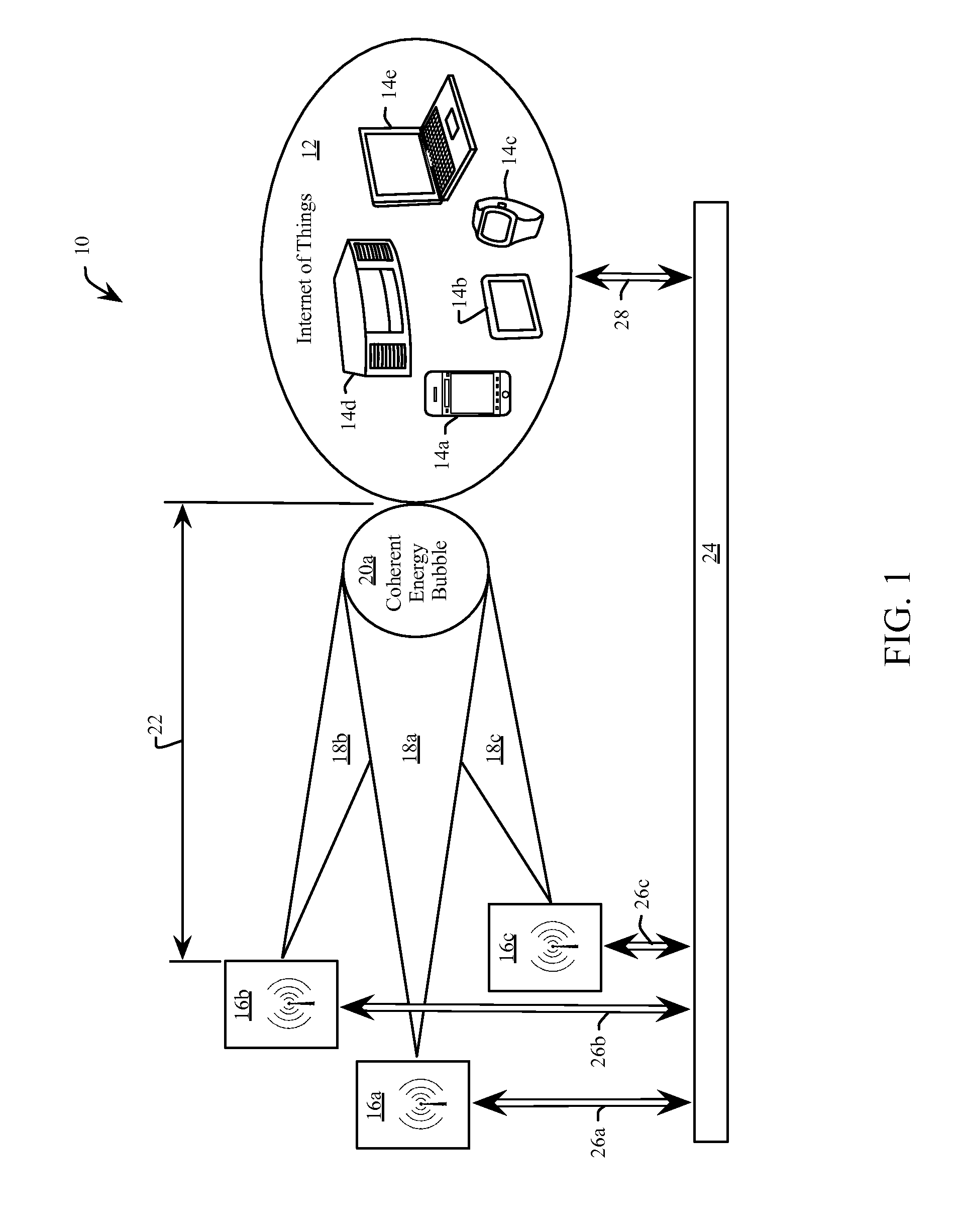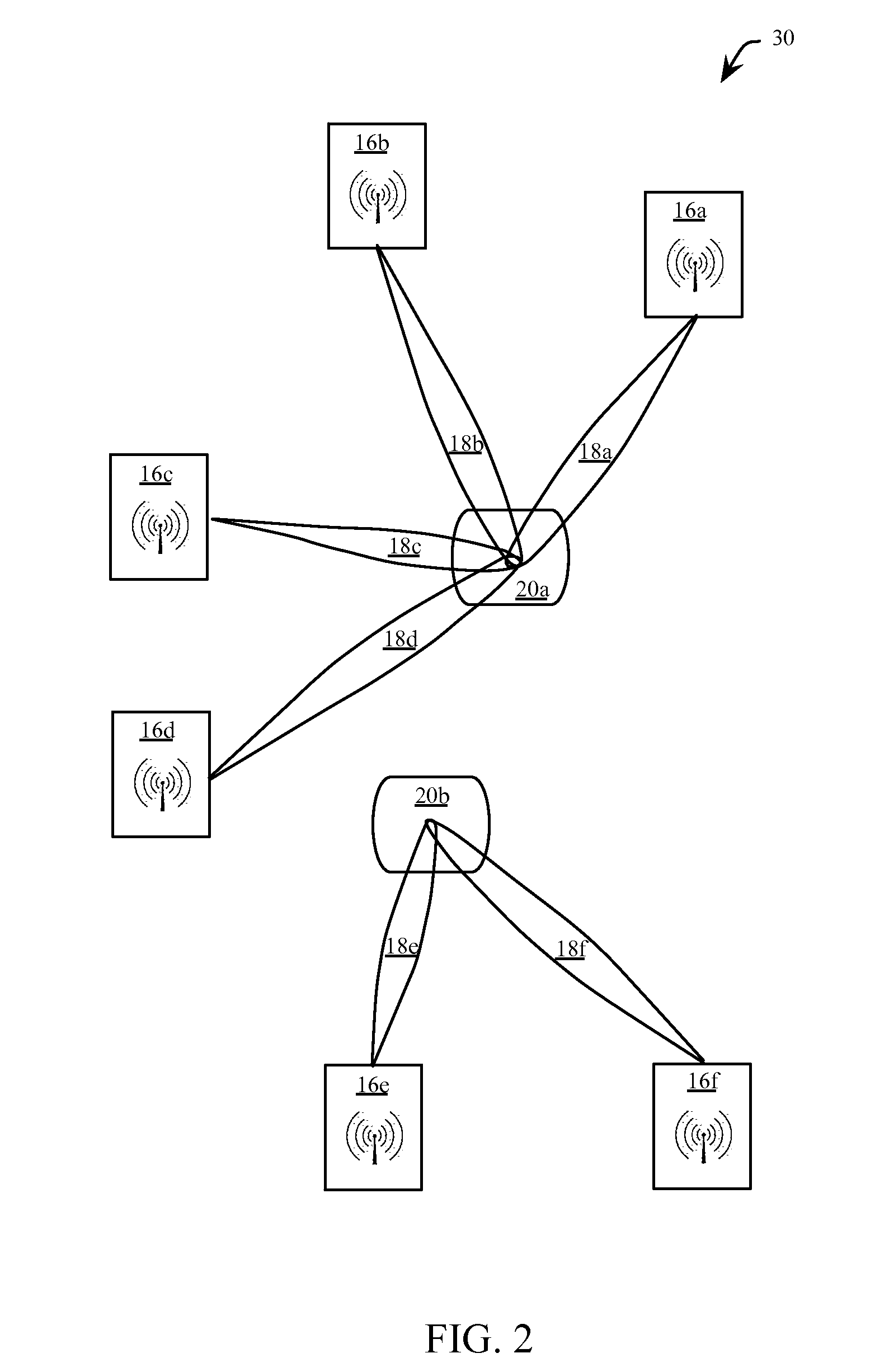Wireless Energy Transfer Using Alignment Of Electromagnetic Waves
a technology of electromagnetic waves and wires, applied in the direction of transformers/inductances, antennas, inductances, etc., can solve the problems of limited tethered solutions to powering portable devices, corresponding increase in energy consumption of these devices, and physical limitations of how much energy a portable device can stor
- Summary
- Abstract
- Description
- Claims
- Application Information
AI Technical Summary
Benefits of technology
Problems solved by technology
Method used
Image
Examples
embodiment 10
[0028]Referring to FIG. 1 an embodiment 10 of a system for wireless energy transfer provides energy (e.g. “powers”) an IoT 12, including for example a cell phone 14a, a tablet 14b, a smart watch 14c, a stereo 14d and a computer 14e. The energizable devices 14a through 14e (generally 14) are merely illustrative and should not be considered to constrain the potential devices that would comprise the IoT 12. In one example, all of the devices 14 are of the same type. In another example, the devices 14 are low power devices such as RFID tags. In another example, the devices 14 are high power devices, such as motorized wheelchairs. Various embodiments replace the IoT 12 with one or more devices 14 that need not be associated with, nor communicate, with one another.
[0029]The devices 14 of the IoT 12 receive energy from a plurality of power access points 16a, 16b and 16c (generally 16). Each power access point 16a, 16b and 16c emits a respective energy beam 18a, 18b and 18c (generally 18), ...
embodiment 30
[0043]FIG. 2, FIG. 3 and FIG. 4 show three embodiments wherein energy beams 18 are reconfigured to form coherent energy bubbles that track the changing positions of a plurality of devices. With reference to FIG. 1 and FIG. 2, the embodiment 30 of FIG. 2 includes the three power access points 16a, 16b and 16c of FIG.1, transmitting respective energy beams 18a, 18b and 18c to form a coherent energy bubble 20a. A fourth power access point 16d transmits a energy beam 18d towards the coherent energy bubble 20a. As with the foregoing description of FIG. 1, the energy bubble 20a is coincident with a receiving antenna of an energizable device. The energy of each energy beam 18a, 18b, 18c and 18d is lower than the energy for each of the same beams 18a, 18b and 18c in FIG. 1 for the same required total energy received at the coherent energy bubble 20a. In one embodiment, the energy of at least one of the energy beams 18a, 18b, 18c and 18d is different from each other energy beam, wherein the ...
embodiment 80
[0072]When the WIL section 84 is operating as a master, the frequency scaler 122 decreases the fundamental frequency from the oscillator 92 to provide a reference clock frequency to the WIL antenna that does not interfere with the frequency for the energy beam. In the embodiment 80 the oscillator 92 provides a fundamental frequency, which is scaled by 0.5 to create a 2.9 GHz reference clock frequency. Prior to all of the power access points being frequency locked, the spectrum near to the fundamental frequency will be noisy, hence it is desirable to frequency scale the fundamental frequency from the oscillator 92 to generate a reliable reference clock frequency for frequency locking with other power access points. In other embodiments, the oscillator 92 operates at a frequency appropriate for WIL (e.g. 2.9 GHz) and the energy beam section 82 scales the oscillator frequency to generate an appropriate frequency for the energy beam (e.g. 5.8 GHz).
[0073]Continuing the example embodiment...
PUM
 Login to View More
Login to View More Abstract
Description
Claims
Application Information
 Login to View More
Login to View More - R&D
- Intellectual Property
- Life Sciences
- Materials
- Tech Scout
- Unparalleled Data Quality
- Higher Quality Content
- 60% Fewer Hallucinations
Browse by: Latest US Patents, China's latest patents, Technical Efficacy Thesaurus, Application Domain, Technology Topic, Popular Technical Reports.
© 2025 PatSnap. All rights reserved.Legal|Privacy policy|Modern Slavery Act Transparency Statement|Sitemap|About US| Contact US: help@patsnap.com



